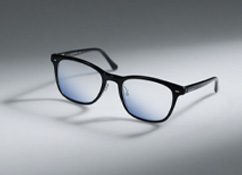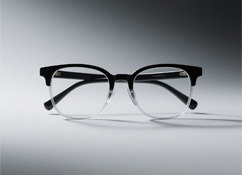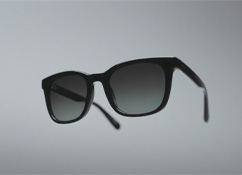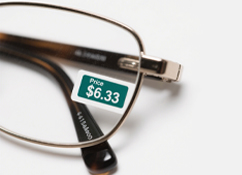High Prescription Lenses: Does a Stronger Rx Mean Thicker Lenses? (2025 Guide)
If you’ve ever picked up new glasses and thought, “My prescription’s stronger—why are these lenses so thick?” you’re not alone. Many people assume “higher prescription = thicker lenses,” especially after seeing thick “coke-bottle lenses” on folks with severe myopia. But here’s the truth: Lens thickness depends on more than just how strong your Rx is. Let’s break down what really affects lens thickness, plus how to get thin, lightweight lenses—even with a strong prescription.
Does a Higher Prescription Always Mean Thicker Lenses? The Short Answer
No. While prescription strength plays a role (stronger Rx = more light bending, which can mean thicker lenses), it’s not the only factor. Think of it like baking: The same recipe (prescription) can turn out different results depending on ingredients (lens material) and technique (design). With the right choices, even 800-1000 degree prescriptions can avoid that “bulky” look.
What Actually Determines Lens Thickness? 3 Key Factors
1. Refractive Index (The “Thinness Secret”)
A lens’s refractive index measures how well it bends light—the higher the number, the less material needed to achieve the same prescription strength. Common indices: 1.56, 1.60, 1.67, 1.74.
For mild prescriptions (under 300 degrees): 1.56 or 1.60 is plenty (no need to overspend).
For strong prescriptions (600+ degrees): 1.67 or 1.74 can cut thickness by 30-50% compared to 1.56.
Example: A 600-degree myopia lens in 1.56 index might have thick edges, but switch to 1.74, and it’s noticeably slimmer.
2. Lens Design (Aspheric vs. Spherical)
Old-school spherical lenses often have thick edges (to fix distortion), but aspheric lenses use a flatter, more refined curve. This makes them:
10-15% thinner at the edges (great for 500+ degrees).
More natural-looking (no “fish-eye” effect).
For high prescriptions, aspheric + high-index is a winning combo—thin and clear.
3. Custom Fit (Pupillary Distance Matters)
Your pupillary distance (PD)—the gap between your pupils—affects how lenses are cut. If a lens’s “optical center” doesn’t match your PD, edges get thicker to compensate.
Opt for “custom lenses” (calculated for your PD and frame size) to distribute light-bending power evenly—no unnecessary bulk.
3 Frame Tips to Make Lenses Look Even Thinner
Even the best lenses need the right frame to shine. Here’s how to maximize “slim appeal”:
Choose Smaller Frames (Less Edge to Show)
Myopia lenses are thinnest in the center, thickest at the edges. A huge frame means more edge to see—so stick to sizes close to your PD. For example: A 600-degree Rx in a small square frame looks way thinner than in an oversized round frame.
Pick Lightweight Materials
Heavy frames make even thin lenses feel bulky. Top lightweight options:
Pure titanium: Strong, skin-friendly, and often just 10-15g.
Titanium alloy: Balances lightness and flexibility (great value).
TR90: Shatterproof and ultra-light (under 10g—perfect for kids or sports).
Avoid “Oversized” for Strong Rx
Oversized frames force lenses to be cut wider, which amplifies edge thickness. If your prescription is 500+ degrees, opt for “medium” or “small” frames with a narrow width—your lenses will thank you.
FAQ: Thin Lenses for High Prescriptions
Q: Is 1.74 index worth it for 600-degree myopia?
A: Yes—1.74 cuts thickness by 40-50% vs. 1.56, making it a smart upgrade for strong Rx.
Q: Can aspheric lenses help with 800+ degrees?
A: Absolutely. Pair them with 1.74 index, and you’ll get the thinnest, clearest result.
Q: Do lightweight frames work for all face shapes?
A: Most do! Titanium and TR90 frames come in round, square, and cat-eye styles—ask your optician to match your face shape.











